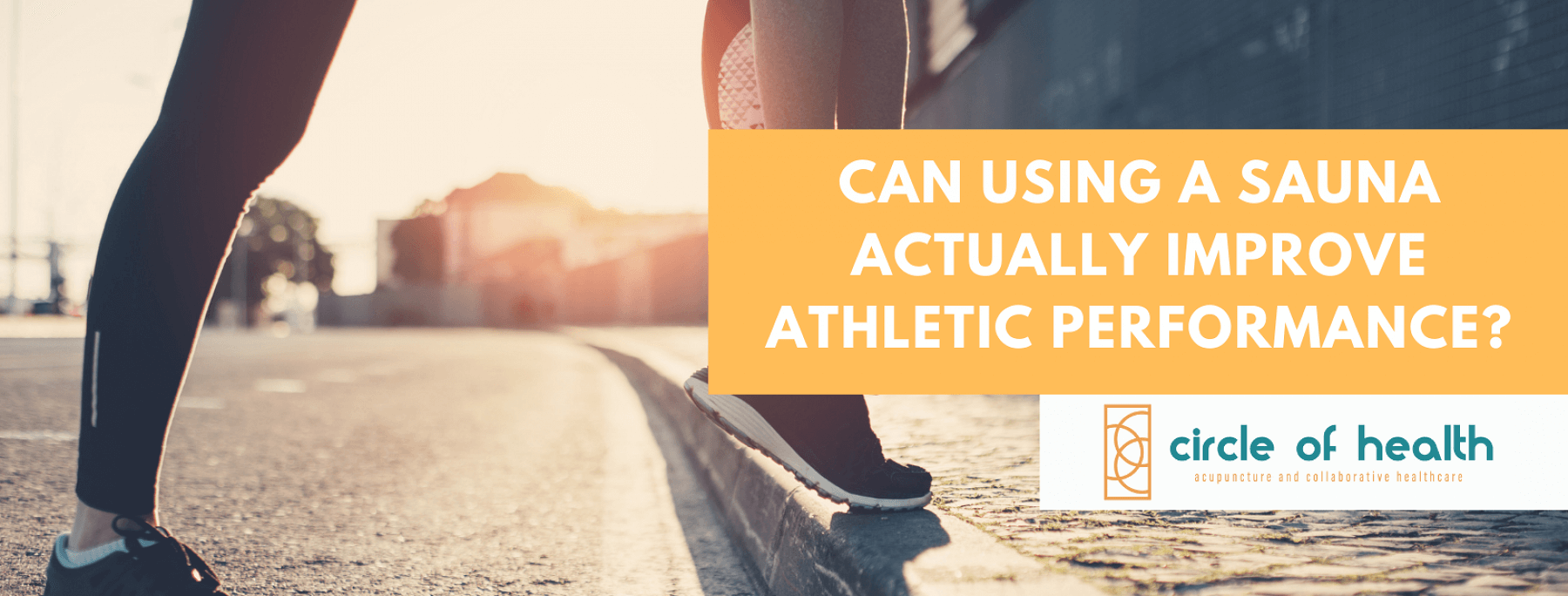After finishing a workout, or a long day at work, those in the know find the relaxing heat of a sauna a very attractive option. Why? Well, in addition to being incredibly relaxing, regular saunas also offer many health benefits for athletes — like improving muscular endurance and shortening recovery time after exercise.Taking regular sauna may even be beneficial for life expectancy!
How do you pick a sauna?
There are two types of sauna. There are some that use light to create heat. These are known as far-infrared (or just infrared saunas) saunas. The light from these saunas penetrates the skin, warming up your tissues without warming the surrounding air. There are also the much hotter, traditional “dry saunas”, known as Finnish saunas, which use heat from rocks or other heating elements to warm the air. In some Northern European countries, saunas are commonplace. For instance, in Finland there are reportedly 3 million saunas – an average of one for every household (1). In other countries in Europe, North America or the rest of the world saunas are not as ubiquitous – though far-infrared saunas are hard to come by, it’s possible to find traditional “dry saunas” in many health clubs, spas and some gyms. Let’s take a look at some of the research that has been conducted into sauna use.
Longevity
There has been plenty of research into the use of far-infrared saunas. Regular use has been found to have beneficial effects for many chronic health problems, including high blood pressure, congestive heart failure and rheumatoid arthritis (2). In addition, the high temperatures of saunas cause the release of a family of proteins known as “heat shock proteins” which (you guessed it) are released in response to heat. The importance role these proteins play in the body is still emerging, but it is known that they are involved in free-radical scavenging and repairing protein damage. As such, they may prevent diseases of protein misfolding such as Alzheimer’s and Parkinson’s disease (3). This repair hypothesis has been tested in flies (4) and in worms (5) – in fact heat treatment resulted in an increase in lifespan of both species by up to 15%. Even more compelling evidence has recently been published in the Journal of the American Medical Association, which looked at 2315 Finnish men and their use of saunas. The important finding was that regular sauna use reduced the risk of cardiovascular problems and reduced the risk of all-cause mortality. In fact, the researchers observed that men who use a sauna two or three times a week had a 23% lower risk of suffering a heart attack. Significantly, those who used it up to seven times a week had a 48% reduced risk of mortality compared to those who used it just once a week (6).
Free-radical scavenging
The unique stresses that the body experiences in a sauna have been shown to increase levels of superoxide dismutase (SOD), an important enzyme in the scavenging of free-radicals (7). Free radicals can cause damage to DNA, proteins and cells causing a whole host of diseases, such as heart disease as well contributing to the aging process (8).
Endurance
Research published in the Journal of Science and Medicine in Sport found using the sauna post-exercise resulted in an improvement in endurance running performance, and researchers suggest this is likely due to increased blood volume in the body. Interestingly, those who used a sauna post-exercise were able to run up to 23% further before exhaustion than those who did not (9). Similar results have been observed in cyclists. Sauna bathing after exercise increased athletes’ blood plasma volume, a good marker of endurance performance (10). As you know from experience, exercise increases the body’s temperature. For many people, beginning new exercise regimes can lead to a feeling of fatigue. However, as you get fitter, adaptations to body temperature improve and your body gets better at regulating its temperature. So it's possible to use a sauna as a training tool to adapt to these changes so as to reduce the strain on your body while performing aerobic endurance exercise.
Muscle Growth
As mentioned previously, one of the many physiological adaptations that occur when sitting in a sauna is the release of heat shock proteins. In an experiment conducted in rats, heat treatment (41°C) not only caused a release of heat shock proteins but remarkably the rats were able to regrow more muscle than the control group not given heat treatment. A. On average, there was a 30% improvement in muscle growth compared to the control group (11). As early as 1989, Finnish researchers discovered that using a sauna could improve the amount of human growth hormone (HGH) produced by the body. HGH is still not fully understood more than a quarter of a century later, but it is known that HGH plays a very important role in the body’s growth and the repair of its tissues, including promoting protein synthesis in muscle. In fact, the Finnish researchers showed that two one-hour sessions daily (note this is probably a bit extreme for every-day use!) showed that after just three days there was a 16-fold increase in the amount of HGH release resulting in more muscle growth. (12). In summary, the regular use of saunas likely has beneficial effects on life-expectancy, exercise performance, and post-exercise recovery. It might be worth your while finding a sauna near where you live or work and let the heat work its magic.
References
- http://www.stat.fi/tup/suoluk/suoluk_asuminen_en.html
- http://www.mayoclinic.org/healthy-lifestyle/consumer-health/expert-answers/infrared-sauna/faq-20057954
- Sutkowy, Paweł, et al. "The effect of a single Finnish sauna bath after aerobic exercise on the oxidative status in healthy men." Scandinavian journal of clinical and laboratory investigation 74.2 (2014): 89-94.
- Khazaeli, Aziz A., et al. "Heat-induced longevity extension in Drosophila. I. Heat treatment, mortality, and thermotolerance." The Journals of Gerontology Series A: Biological Sciences and Medical Sciences 52.1 (1997): B48-B52.
- Lithgow, Gordon J., et al. "Thermotolerance and extended life-span conferred by single-gene mutations and induced by thermal stress." Proceedings of the National Academy of Sciences 92.16 (1995): 7540-7544.
- Laukkanen, Tanjaniina, et al. "Association between sauna bathing and fatal cardiovascular and all-cause mortality events." JAMA internal medicine 175.4 (2015): 542-548.
- Wyttenbach, Andreas, and André Patrick Arrigo. "The role of heat shock proteins during neurodegeneration in Alzheimer’s, Parkinson’s and Huntington’s disease." Heat shock proteins in neural cells. Springer New York, 2009. 81-99.
- Hekimi S, Lapointe J, Wen Y. Taking a "good" look at free radicals in the aging process. Trends In Cell Biology. 2011;21(10) 569-76.
- Scoon, Guy SM, et al. "Effect of post-exercise sauna bathing on the endurance performance of competitive male runners." Journal of Science and Medicine in Sport 10.4 (2007): 259-262.
- Stanley, Jamie, et al. "Effect of sauna-based heat acclimation on plasma volume and heart rate variability." European journal of applied physiology 115.4 (2015): 785-794.
- Selsby, Joshua T., et al. "Intermittent hyperthermia enhances skeletal muscle regrowth and attenuates oxidative damage following reloading." Journal of Applied Physiology 102.4 (2007): 1702-1707.
- Leppäluoto, J., et al. "Endocrine effects of repeated sauna bathing." Actaphysiologicascandinavica 128.3 (1986): 467-470.
Article Source: https://puori.com/blogs/puorilife/can-using-a-sauna-improve-athletic-performance

Garth Reynolds, MSTCM, L.Ac.
Licensed Acupuncturist and Clinical Herbalist | Schedule Your Appointment
Martial Arts Instructors with Bagua Internal Arts | Local & Online Classes Weekly
#SaunaforAthletes #InfraredSauna #SaunaBenefits #InfraredSaunaBenefits #NaturalHealing #NaturalWellness #AthleteHealth #Athlete


